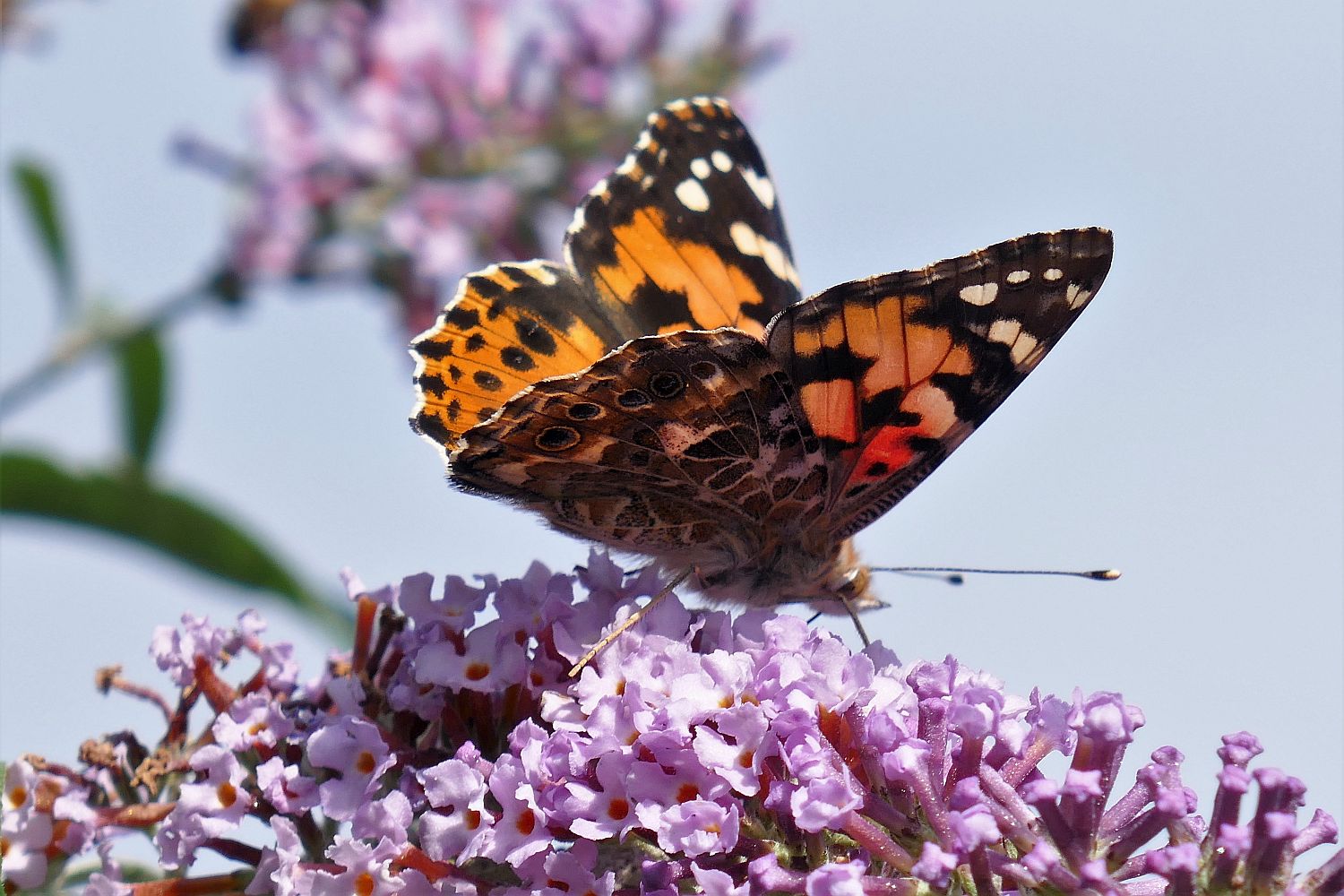The abundance of Painted Lady butterflies seen in the UK varies hugely from year to year, more so than for any other butterfly species, and these fluctuations occur synchronously in other nearby countries demonstrating that Europe is recolonised annually by this migratory insect (1). Subsequently, details of the butterfly's extraordinary, multi-generational c.12,000km (7500 miles) annual migratory circuit, from sub-Saharan Africa to Scandinavia and back, have been pieced together (2-4).
It had long been assumed that the fluctuations in Painted Lady numbers, which may vary by more than two orders of magnitude from one year to the next in the UK, was ultimately driven by winter weather conditions in North Africa through impacts on the butterfly's larval hostplants. However, a recent study, making use of data from the UK Butterfly Monitoring Scheme and similar data from Catalonia (Spain) and the Netherlands, has revealed a more complex picture (5).
The research correlated environmental conditions in different parts of the Painted Lady's migratory cycle with abundance. The Normalized Difference Vegetation Index (NDVI) proved to be the most informative environmental variable. NDVI is a measure of vegetation health and density derived from satellite measurements comparing the reflectance of red and near-infrared light - active photosynthesis absorbs much of the red light so areas with healthy, dense vegetation growth have a high NDVI value.
Modelling showed that there was indeed a positive correlation between the NDVI value of the North African Maghreb region (Morocco, Algeria and Tunisia) in March and April and the number of Painted Ladies arriving in Catalonia in spring. More surprising, there was also a clear relationship between the winter (January and February) NDVI values of the area south of the Sahara, compromising tropical savannah and semi-arid scrubby grasslands, and European Painted Lady abundance.
It seems that the very large influxes of butterflies that are termed 'Painted Lady years' depend on high vegetation productivity during the winter dry season in sub-Saharan West Africa. The successful breeding of the butterfly in these areas, mainly in Mali and Burkina Faso, in favourable winters is the catalyst for subsequent booms in the Maghreb and then Mediterranean Europe, culminating in the mass arrivals of Painted Ladies in the UK in early summer. On the other hand, poor winter breeding conditions for the butterfly in this same region is probably the main limitation on European abundance in poorer years.
While previous studies had demonstrated that Painted Ladies migrated across the Sahara, this is the first to show the importance of this desert crossing as part of the annual cycle because of the pivotal role of winter breeding in the savannahs of West Africa.
Thanks
This research would not have been possible without the dedication and expertise of all the volunteer participants in the UK Butterfly Monitoring Scheme organised by Butterfly Conservation, the UK Centre for Ecology & Hydrology, British Trust for Ornithology and Joint Nature Conservation Committee.
Richard Fox, Associate Director Recording and Monitoring, Butterfly Conservation
(1). Pollard, E., van Swaay, C.A., Stefanescu, C., Lundsten, K.E., Maes, D. & Greatorex-Davies, J.N. (1998) Migration of the painted lady butterfly Cynthia cardui in Europe: evidence from monitoring. Diversity and Distributions 4:243–253. https://www.jstor.org/stable/2999830
(2). Stefanescu, C., Páramo, F., Åkesson, S., Alarcón, M., Ávila, A., Brereton, T., Carnicer, J., Cassar, L.F., Fox, R., Heliölä, J., Hill, J.K., Hirneisen, N., Kjellén, N., Kühn, E., Kuussaari, M., Leskinen, M., Liechti, F., Musche, M., Regan, E.C., Reynolds, D.R., Roy, D.B., Ryrholm, N., Schmaljohann, H., Settele, J., Thomas, C.D., van Swaay, C. & Chapman, J.W. (2013) Multi-generational long-distance migration of insects: studying the painted lady butterfly in the Western Palaearctic. Ecography 36:474–486. doi:10.1111/j.1600-0587.2012.07738.x
(3). Stefanescu, C., Soto, D.X., Talavera, G., Vila, R. & Hobson, K.A. (2016) Long-distance autumn migration across the Sahara by painted lady butterflies: exploiting resource pulses in the tropical savannah. Biology Letters 12:20160561. doi:10.1098/rsbl.2016.0561
(4). Talavera, G., Bataille, C., Benyamini, D., Gascoigne-Pees, M. & Vila, R. (2018) Round-trip across the Sahara: Afrotropical Painted Lady butterflies recolonize the Mediterranean in early spring. Biology Letters 14:20180274. doi:10.1098/rsbl.2018.0274
(5). Hu, G., Stefanescu, C., Oliver, T.H., Roy, D.B., Brereton, T., Van Swaay, C., Reynolds, D.R. & Chapman, J.W. (2021) Environmental drivers of annual population fluctuations in a trans-Saharan insect migrant. Proceedings of the National Academy of Sciences 118: e2102762118. doi:10.1073/pnas.2102762118


